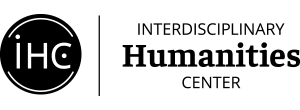03 Dec City, Country, Industry, Agriculture: On the Road with Roy Stryker
In conjunction with the IHC’s Oil + Water series, the University Art Museum presents:
City, Country, Industry, Agriculture: On the Road with Roy Stryker
A photography exhibit on view at the IHC and Cheadle Hall 2217 through winter term.
Between 1935 and 1950, one person helped compile a vast compendium of more than 340,000 highway images. He was not a photographer, but rather an economics professor named Roy Stryker. An innovative educator, Stryker employed documentary photography to bring a sociological edge to his classroom instruction. In 1935, Stryker left his post at Columbia University to “create a pictorial encyclopedia of American agriculture” under the auspices of the government’s Resettlement Administration (later the Farm Security Administration). For Stryker agriculture included images of the life around it. His archive, with pictures by such noted photographers as Dorthea Lange, Walker Evans, and Ben Shahn, became a portrait of the nation during the Depression.
Seven years later, the political tide turned and New Deal programs waned, Stryker accepted a similar position with a very dissimilar entity: Standard Oil of New Jersey (SONJ). This corporate shift, occupied Stryker until 1950. At SONJ, Stryker was not content to serve as a public relations lens for the large corporation; he instructed his coterie of artists that they were, “photographing America” and “recording history.” Indeed, by the end of his seven year employment with Standard Oil, Stryker coordinated 70,000 documentary images that often only tangentially referenced the oil industry. Bus stops and bridges, tourist courts and diners joined images of filling stations and fresh asphalt. Together the images, by noted photographers such as Esther Bubley, Gordon Parks, and John Vachon, capture the culture of the road: the highway, a region described by Professor Ulrich Keller as, “neither city nor country, industry nor agriculture, but the conveyer belt between the two.” The photographs on view in the IHC’s Crowell Reading Room and Research Seminar Room, and near the offices of the College of Letters & Science (Cheadle Hall 2217), come from the vast photographic holding of UC Santa Barbara’s University Art Museum.

